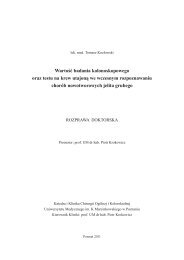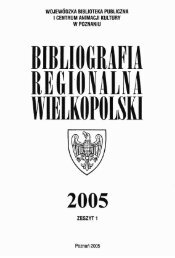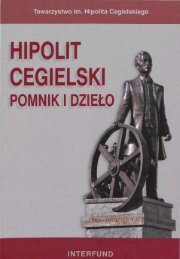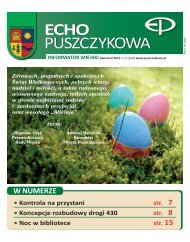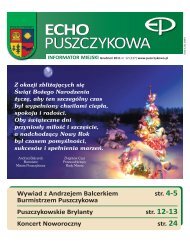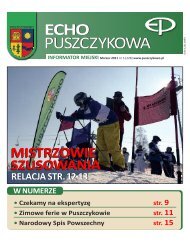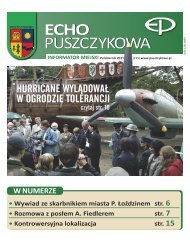MILITARY PHARMACY AND MEDICINE
MILITARY PHARMACY AND MEDICINE
MILITARY PHARMACY AND MEDICINE
Create successful ePaper yourself
Turn your PDF publications into a flip-book with our unique Google optimized e-Paper software.
© Military Pharmacy and Medicine • 2012 • 4 • 18 – 20Battalion comprises also a Cavalry Squadron ofPolish Armed Forces as a mounted representativesubunit.The main mission of the battalion consists ofstately representation of the Polish Army duringstate celebrations, various state and military holidaysor patriotic and religious events, as well asperforming representative tasks at the PresidentialResidence or during official visits hosted bythe Prime Minister [1].Every year, soldiers of the battalion provideceremonial setting to ca. 1200 events, mainlystate, military, or patriotic and religious celebrationsboth home and abroad, as well as performthe guard of honour duties at the Tomb of theUnknown Soldier and the Presidential Palace.Representative Battalion soldiers are well-knownfor their mastery of parade drill, presented tomuch acclaim during state and military holidays,band festivals or other events.The objective of this study was to assess theenergy expenditure of soldiers during a threedaydrill training as part of preparations for thecelebration of the National Independence Day ofNovember 11 th .Material and methodsThe study was conducted in 22 soldiers servingin the Representative Battalion of the PolishArmy The energy expenditure was measuredover three days of intense drill trainingtaking up 8 hours per day. The measurementswere made on the basis of systolic heart rate asrecorded by Polar Sport Tester 810 pulse meters.The energy expenditure was calculated from therelationship between the systolic heart rate andoxygen consumption. The energy expenditurewas measured in soldiers performing differentceremonial tasks under weather conditionsconsisting of the air temperature of 7–9 °C anddrizzle precipitation.ResultsThe average age of the tested soldiers was 25.3±2.5y,ranging from 22 to 31 years. Mean height of thesoldiers was 182.7±3.7 cm (176-191 cm), whilemean body weight was 87.9±7.5 kg (67-101 kg).Original articleTable 1: Energy expenditure during preparations to theNational Independence Day of November 11 th .Subjectno.Energy expenditurekcal/minHeart rateMinimum Maximum Mean1 3.013 80 180 1042 3.105 52 142 803 3.122 59 121 844 3.454 60 144 865 3.665 53 132 846 3.689 69 145 877 3.830 55 177 1188 3.852 57 161 899 3.872 45 225 9110 3.938 47 161 11811 4.036 83 163 11112 4.676 69 148 9413 5.191 68 159 9614 5.359 63 160 9715 5.510 65 158 9816 5.848 68 159 10217 5.924 70 208 10218 6.647 81 161 10519 6.551 64 222 10220 6.928 83 173 10721 7.465 79 227 11122 8.711 86 176 114Mean: 4.93±1.59 66.1±12.1 168.2±29.1 99.1±11.4The energy expenditure during preparations tothe National Independence Day of November 11 this presented in Table 1.Mean energy expenditure in subjects was 4.93±1.59kcal/min. Depending on the ceremonial activitybeing trained, the energy expenditure ranged from3.013 kcal to 8.711 kcal/min. According to Christensen’sclassification of workload, the measuredmean energy expenditure associated with theactivities performed by the soldiers of the RepresentativeBattalion of the Polish Army as partof preparations to the celebration of the NationalIndependence Day of November 11th allows theworkload to be classified as light [2]. Also indicativeof light workload is the mean systolic heartrate of 99.1±11.4 bpm [3]. During the three-dayconcentration, the training sessions were held for8 hours/day, with the effective drill training timeof 7 hours. Mean energy expenditure of soldiers18 http://military.isl-journals.com



